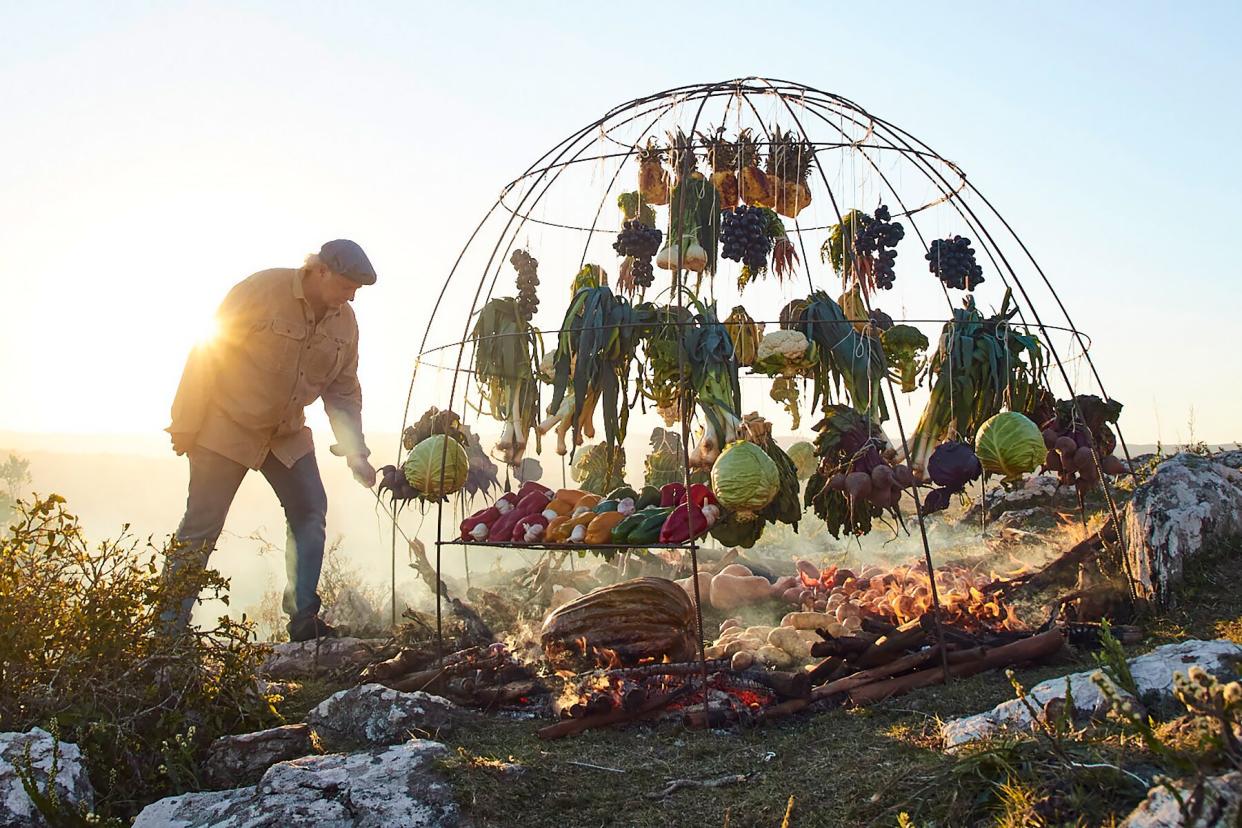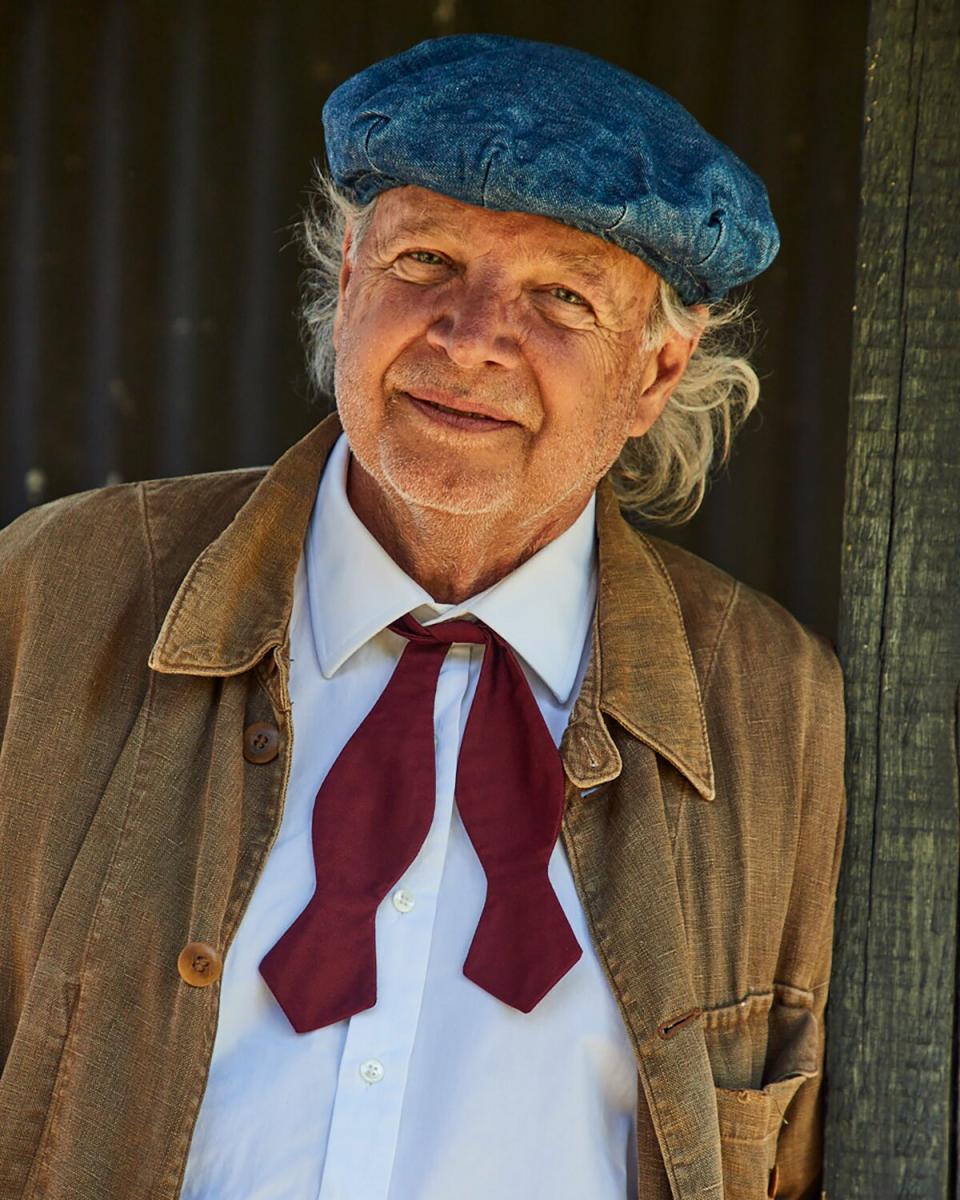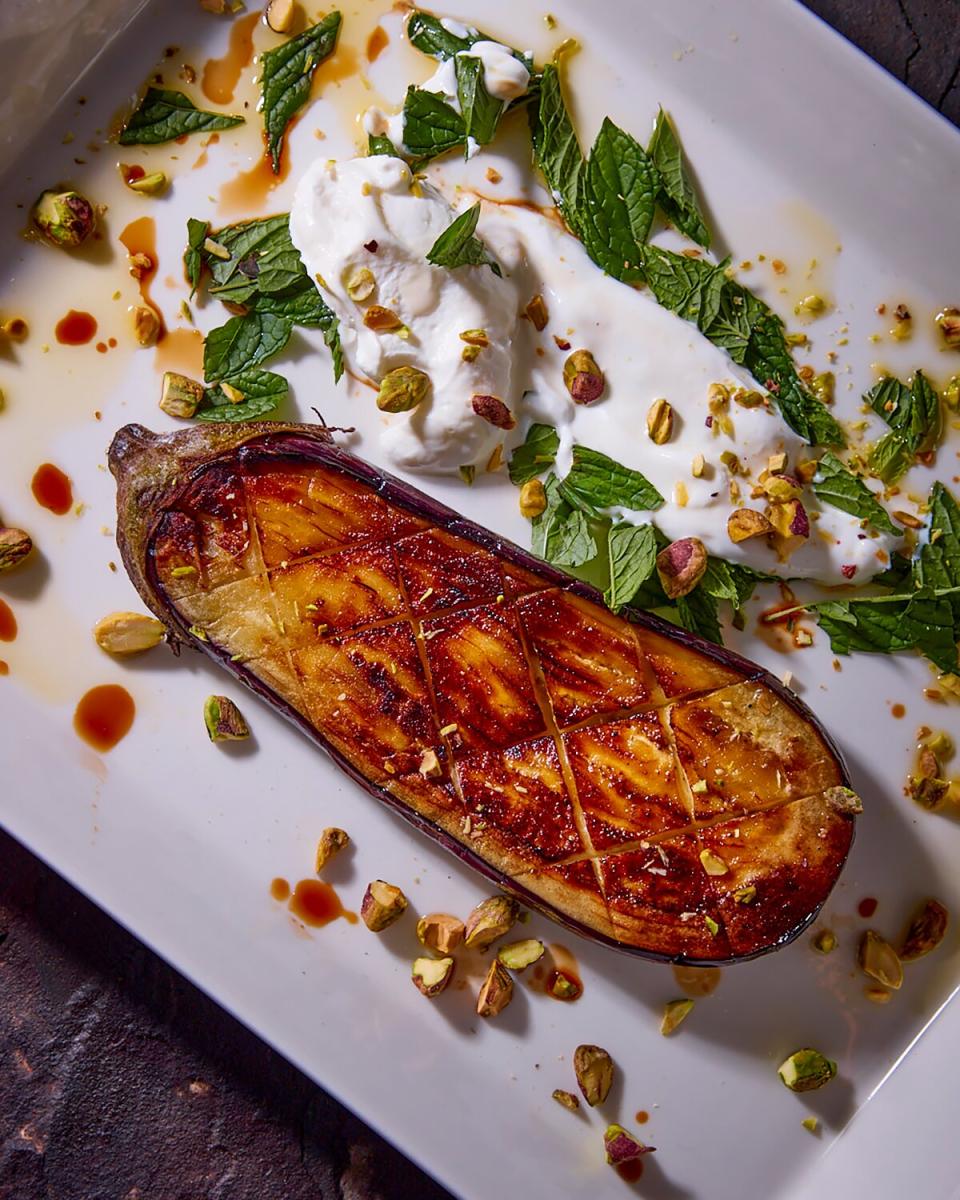Francis Mallmann Is Grilling Vegetables Now

- Oops!Something went wrong.Please try again later.
Excerpted from Green Fire by Francis Mallmann (Artisan Books). Copyright © 2022. Photographs by William Hereford
If you possess a mental picture of Francis Mallmann, especially from his hagiographic Chef's Table episode, it's likely of the Argentine chef emerging, Dionysian, from a woodsmoke haze, bearing the reverently-charred remains of a whole beast, bird, or fish to a laden table. The smoke and showmanship haven't dissipated, but he would now like for you to roll back that footage and slightly re-imagine it. Still fire, still swagger, but now in a jaunty pink beret, bearing eggplants, pumpkins, zucchini, and fruit. It's passion — his stock in trade — but it's also something of an atonement for the excesses of his generation. Mallmann's newest book, Green Fire, which he wrote with Peter Kaminsky, is an exploration of the powerful alchemy of flame, fruit, herbs, and vegetables, and what he hopes will be a course correction for the climate and culture.
The 66-year-old Mallmann isn't known for his restraint in food, festivity, or expressing his feelings about either. Asked about what fledgling grillers should serve to guests, he says, in classic Mallmann fashion, "Tenderness is better than the passion at the beginning. As in lovemaking, you start with tenderness. Then you can go other ways, but it's exactly the same thing, cooking. You have to start understanding your mate, which is the fruit. So you have to look and see what's happening to them. So you can't start with a big fire; that would be a disaster." This kind of talk may either stoke or cool your ardor, but under the choke and swagger of it is some world-class life-fire cooking advice, stoked by a mission to un-scorch the earth.

A few catalysts sparked the change. For the better part of a decade, Mallmann has been receiving messages via social media from younger people who admire his elemental approach to cooking, but encourage him to delve more deeply into plant-based ingredients. During a recent visit to the Food & Wine offices in New York City, he explained, "Young people are saying master chef, we love your work, so inspiring to see your fires — by the way we are vegan or vegetarian, but we still like it."
MAKE: Francis Mallmann's Garlicky Mushroom-Onion Toasts
The "owing" is something that had been smoldering in Mallmann's psyche in recent years as he ruminated on the legacy of hippies-turned-capitalists. "Something is happening with this young generation. They're holding hands all around the world as we did with the hippie movement. I was 13, 14, then," he recalled. "It was very strong for me. I was a child in Patagonia but still we had this feeling all around the world that we had a common cause. Now, I feel the same thing."
That approach did the trick; it was not just the meat of the message that swayed him, but the tone in which it was conveyed. "It started really, out of their elegance and education of how they manifested themselves to me without criticizing what I did, but sort of saying that they liked it," Mallmann said. "I thought it was so nice and I got so many of those messages. I thought, well, I owe these young people something and I decided to do the book."
MAKE: Francis Mallmann's Dulce de Leche Crêpes
It's a sharp turn from his previous trajectory. He continued, "We were raised to collect properties and paintings and these guys, they have as many ambitions as we had, but it's not about owning things. They want a better world. And I think that's very beautiful."
I love meat, but we have to change.
—Francis Mallmann
This incarnation of said beauty, for him, would be the restoration of a planet eroded by humankind's appetites. "We are all aware that we have destroyed the oceans. I think it's easier to get rid of the cows than of the oceans, and it's a huge damage. Very, very bad. So that has to change," Mallmann said. "In the near future, we will be eating less fish and less meat. The traceability of both, even chickens and birds, would be very important. Where do they come from? How have they been fed? Did they use antibiotics or not? That will take us to a corridor, an edge where the market would be smaller. I love meat but we have to change. There's no way out: We have to change."
This may seem like a seismic shift for a chef who — at least in his media portrayals — has seemed like an unapologetic avatar of fleshly pleasures, but his love of herbs, fruits, and vegetables is not just recently kindled. As a child, Mallmann's neighbor tended to his garden what seemed like day and night. Patagonia, he notes, is very remote, and their chats near the trees and beds seemed like a perfectly pleasant way to pass the time. But when he moved out on his own, he felt that tug back to the earth.
MAKE: Francis Mallmann's Grilled Peaches and Plums with Mascarpone
"I decided to make a very small garden," Mallmann said. "I planted some carrots. I remember some parsley and spring onions. I would tend to it before work." Then he moved to Paris, where as a young chef, he saw a reverence for vegetables he'd never witnessed before.Still, this pursuit still didn't fully take root until he was back on his native soil.
"I lived [in Paris] for quite a while and I understood many new things about vegetables, but still they were like a garnish. I think that my understanding of vegetables truly came after I was 40, after being a chef for 20 years. It's quite incredible," Mallman marveled. "My friendship with eggplant, with fennel, with many of the vegetables that I really started trying to understand, took me many years. So it has been a long path."
You have to go stand, watch a fire, and understand it.
Having traveled this far, Mallmann hopes to lead others where he's gone. Though his elaborate blazes are the stuff of screen, page, and culinary tourist legend, he is shockingly not precious about the way or vessel in which they're constructed. "You can make a fire in the floor. It can be inside of a Weber kettle. It can be in the grill. It can be in the forest," he said. "But basically the success of cooking with fire is patience and your intuition to understand what fire does to your food. It's a process, it's a craft. You can read my books, but you will not learn it. You have to practice it. You have to go stand, watch a fire, and understand it. There's no way out. I can give you advice but I can't give you a shock or an injection of fire knowledge."

Excerpted from Green Fire by Francis Mallmann (Artisan Books). Copyright © 2022. Photographs by William Hereford
He's definitely short-selling the book's tremendous utility here, but what he can do is tell you how to cook an eggplant — a perfect starter vegetable for anyone who wants to walk with him along the fire path. To Mallmann, it's not just a foolproof technique; it's an exercise in minding the fire. "Throw the whole eggplant on the coals or even in the flame," he advised. "Be there so they don't burn completely. Then you flip it and you see that it starts crackling. What I like to do is take them out of the fire when they're sort of slightly burned and the peel is falling off and put them in a container with a cover on for 15 minutes. The heat and the humidity of the eggplant finishes the peeling of it and it finishes cooking."
MAKE: Francis Mallmann's Grilled Eggplant and Tomatoes with Parmesan-Basil Crumbs
You're not done yet, said Mallmann. "Then you open it, you scrape with your hands really, not with water or anything, all the little bits of black, you can keep some, and then you can do many different things with it: a puree, to just smashing them a bit."
But for Mallmann, though appealing recipes abound for pumpkins, potatoes, artichokes, tomatoes, drinks, desserts, and more, it's the book's Ratatouille Tian and Churrasco recipe that is the greatest manifestation of this almost phoenix-like resurrection he wishes for the bounty of the planet. "It's got garlic and parsley, and of course, fresh breadcrumbs outside. And then you have the most incredible ratatouille, which I like to cook for a very, very long time so it's slightly burnt on the top," he said.
"I cut it very thin. I put them in many layers and I cook it for two hours. The eggplant and the tomato and zucchini, they all become great friends in that recipe of ratatouille, but it's the eggplant that stands out as the most elegant ingredient."
Like Mallmann himself, it rises from the ashes, transformed. It feeds, it pleases. It just, as he said, takes some patience.

